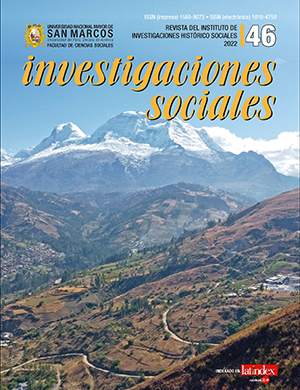Mitmas and Andean colonial ethnogenesis: Towards an interpretation of the Cañari diaspora (16th - 18th centuries)
DOI:
https://doi.org/10.15381/is.n46.22810Keywords:
mitma, cañaris, strategy, ethnicity, ethnogenesisAbstract
The mitma displacement was one of the main characteristics of the Inca policy of control and management of the ethnic groups incorporated into the Tahuantinsuyo. This document seeks to compare the ways taken by the ethnic identities of the mitmas Cañaris between the 16th and 18th centuries, analysing four cases: the region of origin of this group (Cañar, Ecuador) and three areas of displacement: Porcón and Chiara (Peru); and Copacabana (Bolivia). The contrast between these cases, and a brief review of other studies about mitma Cañaris, highlight mechanisms of resistance, adaptation, collective strategies, as well as the permanent negotiation of the ethnic status acquired during the Colonization. The variability of responses to the Hispanic political structure confirms the dynamism of ethnic constructions. This analysis also shows that the colonial times constitutes a period of ethnogenesis in the Andean region, which will adopt a Quechua and Aymara ethnical face. In this process, the role played by the mitmas was leading. This document analise, specifically, the case of the mitmas Cañaris and propose a deepening of ethnohistorical studies, in order to obtain a general view of the role of the mitmas in an Andean colonial ethnogenesis. This process shapes a significant part of the demographic and ethnic structure of the region, and particularly of the nascent republican Peru.
Downloads
Published
Issue
Section
License
Copyright (c) 2022 Mirko Solari Pita

This work is licensed under a Creative Commons Attribution 4.0 International License.
AUTHORS RETAIN THEIR RIGHTS:
a. Authors retain their trade mark rights and patent, and also on any process or procedure described in the article.
b. Authors retain their right to share, copy, distribute, perform and publicly communicate their article (eg, to place their article in an institutional repository or publish it in a book), with an acknowledgment of its initial publication in Investigaciones Sociales.
c. Authors retain theirs right to make a subsequent publication of their work, to use the article or any part thereof (eg a compilation of his papers, lecture notes, thesis, or a book), always indicating the source of publication (the originator of the work, journal, volume, number and date).













